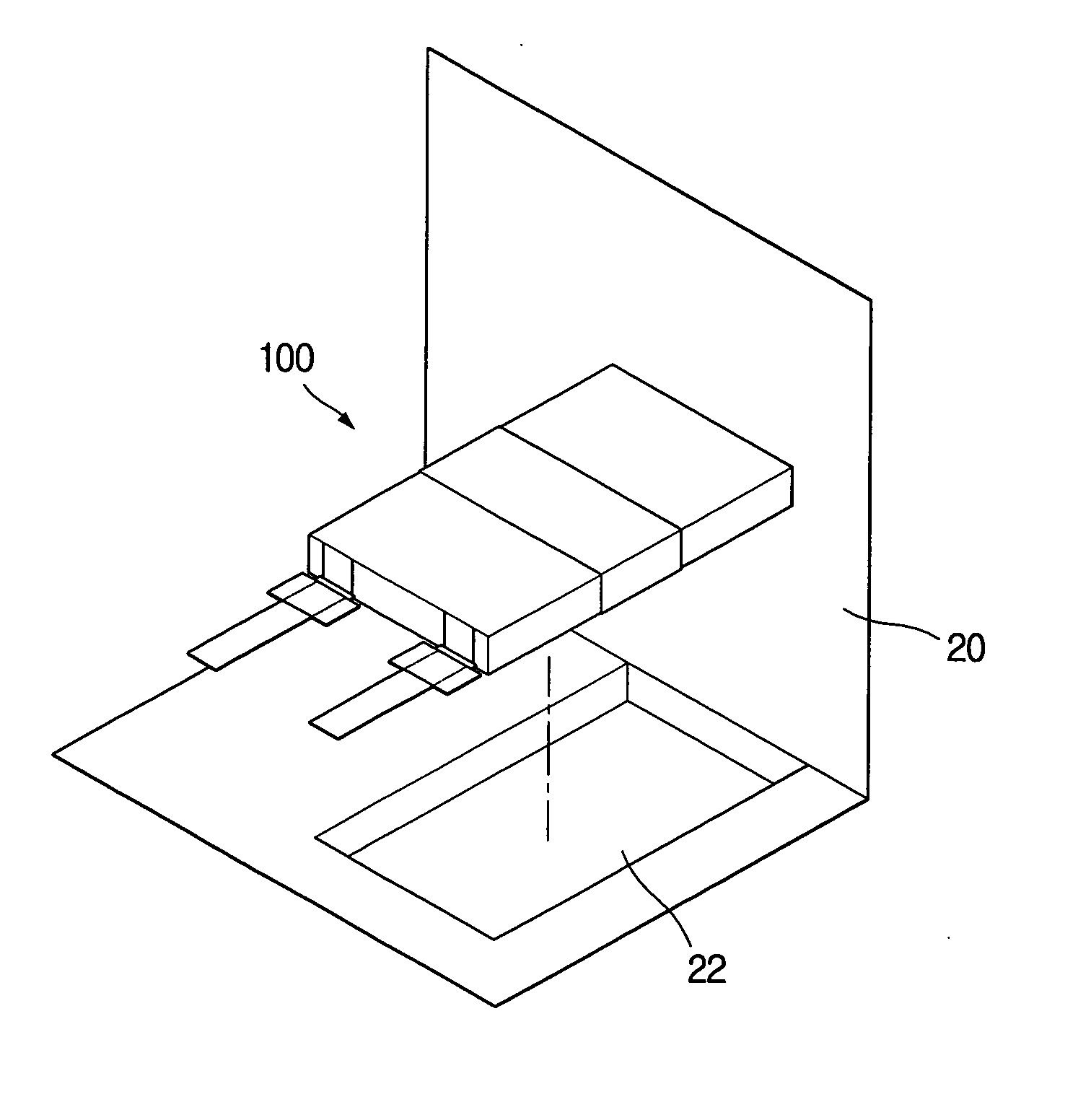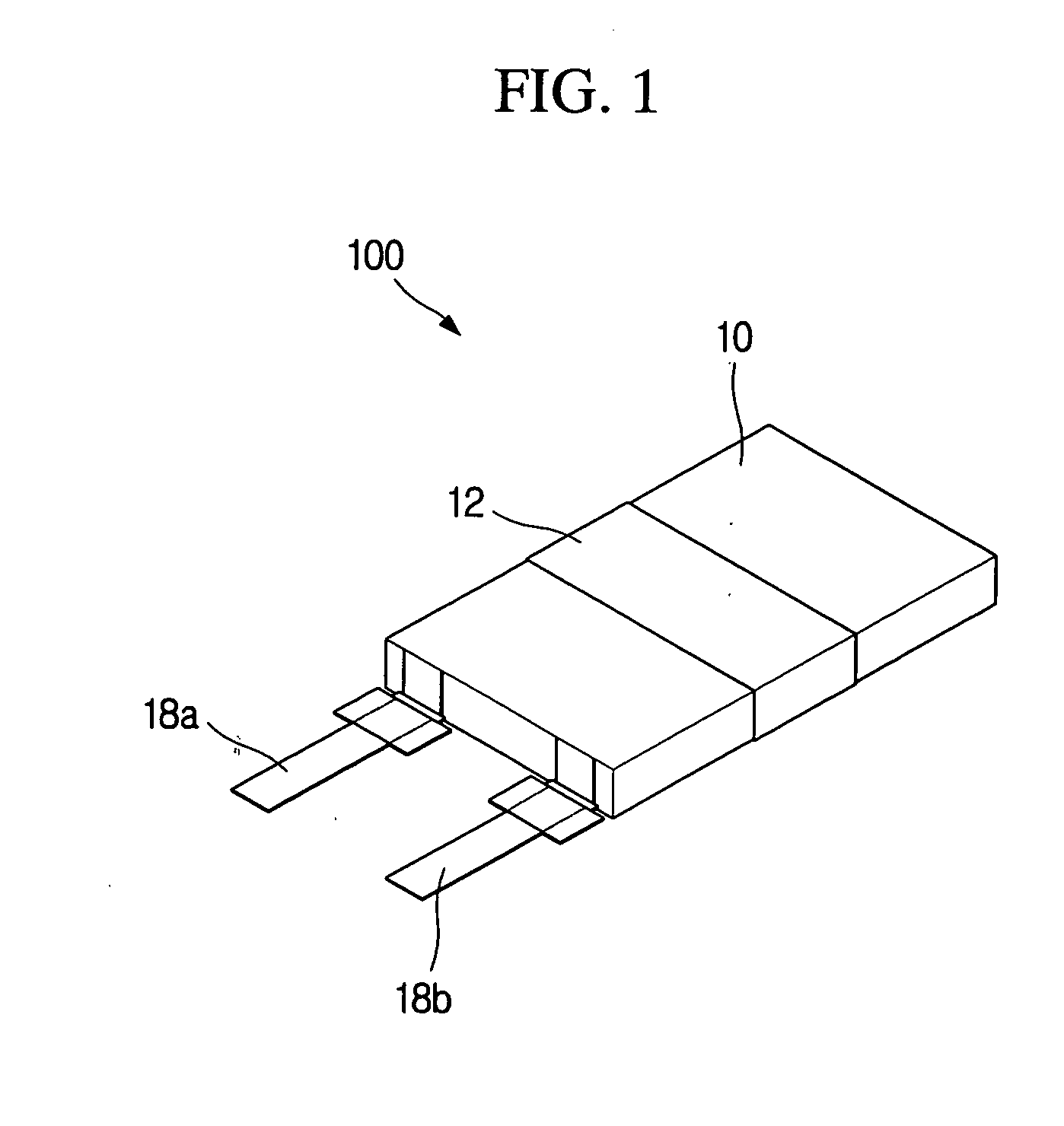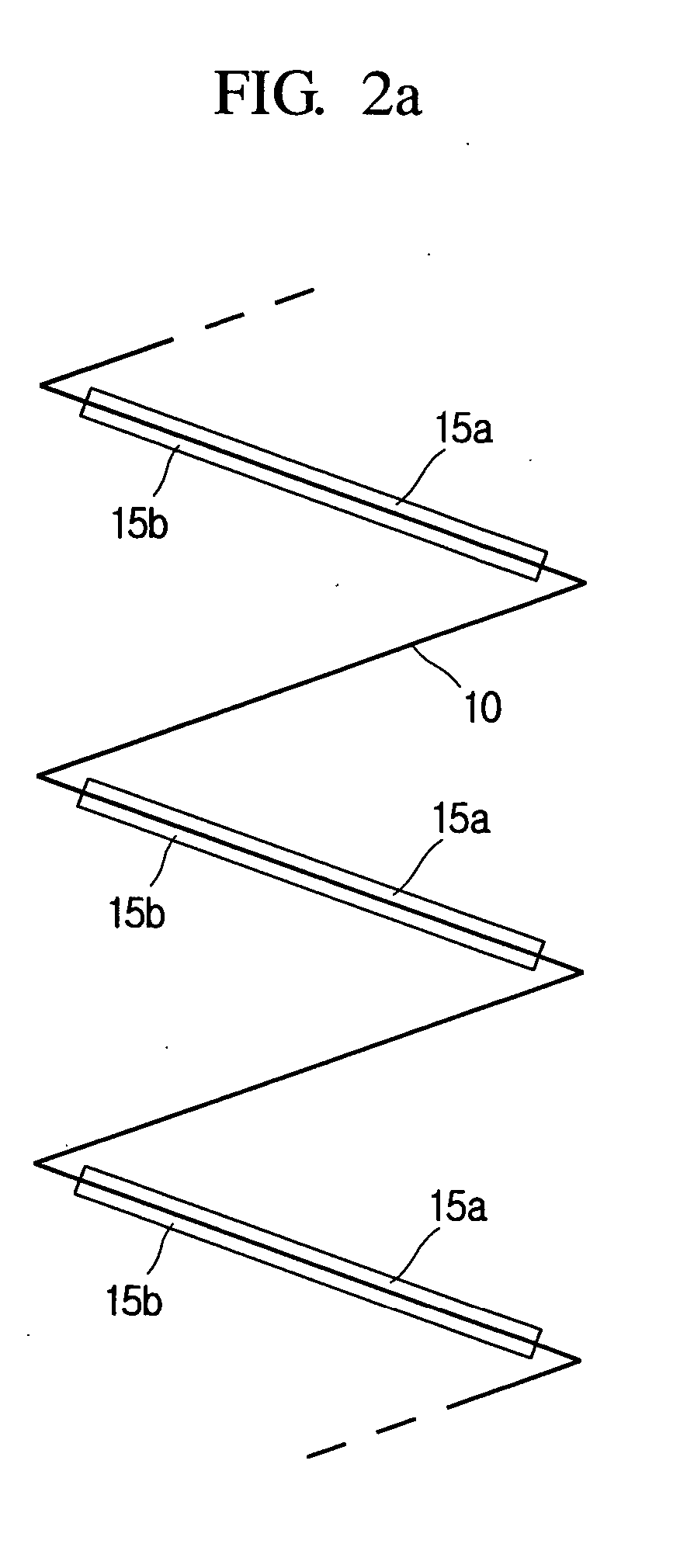Lithium secondary battery with high safety and manufacturing method thereof
a secondary battery and high safety technology, applied in the direction of sustainable manufacturing/processing, cell components, wound/folded electrode electrodes, etc., can solve the problems of affecting the life of the battery, and affecting the stability of the battery life, etc., to achieve simple configuration, high stability, and low cost
- Summary
- Abstract
- Description
- Claims
- Application Information
AI Technical Summary
Benefits of technology
Problems solved by technology
Method used
Image
Examples
experimental example
[0049] The lithium secondary battery manufactured as described above is overcharged, and its results are examined.
[0050] At first, the lithium secondary battery 200 (a single battery having a regular voltage of 4.2V and a capacity of 3.3 Ah) as shown in FIG. 5 is prepared. An acrylic resin in an emulsion state is coated on the lithium secondary battery 200 by soaking the battery 200 into the resin and then dried, three times, to prepare two samples having the adhesive layer 30 for the following experiments 1 and 2. After that, two samples are overcharged under the conditions of a charging rate of 1 C and a voltage of 30V.
TABLE 1WeightThicknessof batteryof batteryBeforeAfterBeforeAfterChargingSamplescoatingcoatingcoatingcoatingconditionsResultsExperi-65.4 g72.6 g5.4 mm7.7 mm1 C / 30 Vno explosionment 1or firingExperi-65.3 g73.0 g5.3 mm7.8 mmment 2
[0051]FIGS. 8a to 8c are graphs showing the change of an electric current, a voltage and a temperature according to a charging time of the...
PUM
| Property | Measurement | Unit |
|---|---|---|
| Pressure | aaaaa | aaaaa |
| Shape | aaaaa | aaaaa |
| Adhesivity | aaaaa | aaaaa |
Abstract
Description
Claims
Application Information
 Login to View More
Login to View More - Generate Ideas
- Intellectual Property
- Life Sciences
- Materials
- Tech Scout
- Unparalleled Data Quality
- Higher Quality Content
- 60% Fewer Hallucinations
Browse by: Latest US Patents, China's latest patents, Technical Efficacy Thesaurus, Application Domain, Technology Topic, Popular Technical Reports.
© 2025 PatSnap. All rights reserved.Legal|Privacy policy|Modern Slavery Act Transparency Statement|Sitemap|About US| Contact US: help@patsnap.com



